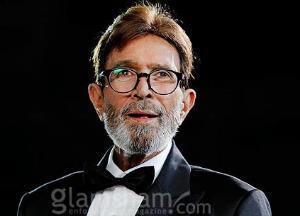If one were to analyze the tremendous fan following and the cult status that Rajesh Khanna had acquired and became the superstar, one predominant motif would be that he also enacted roles that broke the notions of caste creed barriers, and in his own imitable way was the poster boy for social change. All the cult films which made him the superstar were shot through and through with this motif. The premise being put forward would be amplified through few of such films.
DUSHMAN:
Here was a man who had to as a part of punishment go and live with a family and through the character that he etched underlined the importance of a widow in a house, and also was catalytic to create processes whereby the widow could lead a normal life. The histrionic display of emotions that he had expressed along with Meena Kumari as the widow became the talking point for the film.
NAMAK HARAAM:
Here was a man for whom the struggle of the labor class was more dear to his heart than his dear friend and who stuck his neck out and sacrificed the friendship at the altar of solidarity of labor class was what made NAMAK HARAM such a roaring hit.
KATI PATANG:
Widow re-marriage is still a taboo in our country but way back in late seventies Rajesh Khanna stuck his neck out and advocated the cause of widow remarriage in a big way. The exchange of dialogues between the sister and the brother, where Rajesh Khanna chides his sister that she being a woman should be supporting a woman who has been falsely widowed, underlined the fact that at the height of being a superstar, and a romantic hero, within the mandate of being a poster boy for romance tried to inject element of romance into the lives of the deprived as well, who otherwise were left by the society to decay.
AAKHIR KYON:
J Omprakash the favorite director who gave Rajesh Khanna large number of hits cast him once again in this family drama where the travails of marriage were etched out, and the problem that a less educated wife faces when the husband falls for a modern girl, was brought out in succinct detail. Rajesh Khanna played the role of a benefactor who supports Smita Patil to stand on her feet. It was a film that was way ahead of a time as well, as it gave the message to a wife that if the marriage is in trouble then the wife alone need not take blame and should persevere on.
AVTAAR:
It was the film which underlined the importance that if a man has some skill in his hands and determination he can make mountains move. It eulogized the virtues of labor.
SOUTEN:
After a series of flops when Sawan Kumar Tak made SOUTEN one does not know whether it was by design or default that the character played by Padmini Kolhapure was that belonging to a low caste, and Rajesh Khanna?s character fell in love with her. The film became a roaring hit.
Indeed, such varied and diversified roles, that he enacted, most of them at the peak of his career, where he in a subtle manner tried to highlight a social problem and also suggested a solution for it, is what made him a phenomenon that he was. He was brave to be associated with roles which went against the grain of the prevailing social ethos but most of the times he came out with flying colors. Indeed, when a biography on him is written this aspect needs to be proved on in detail and sociologists need to highlight this aspect as it would be a fitting tribute to the memory of the first superstar of India.

